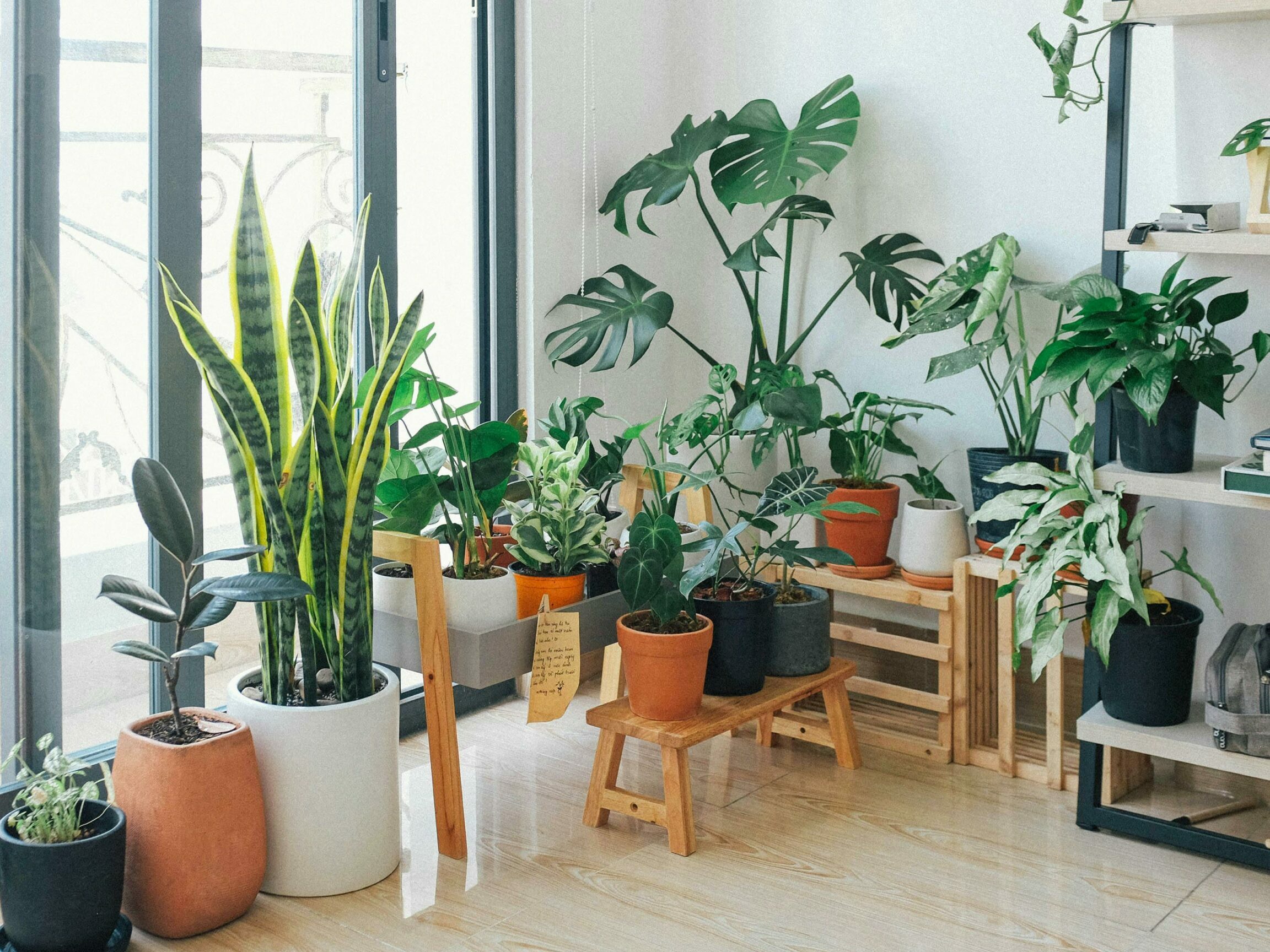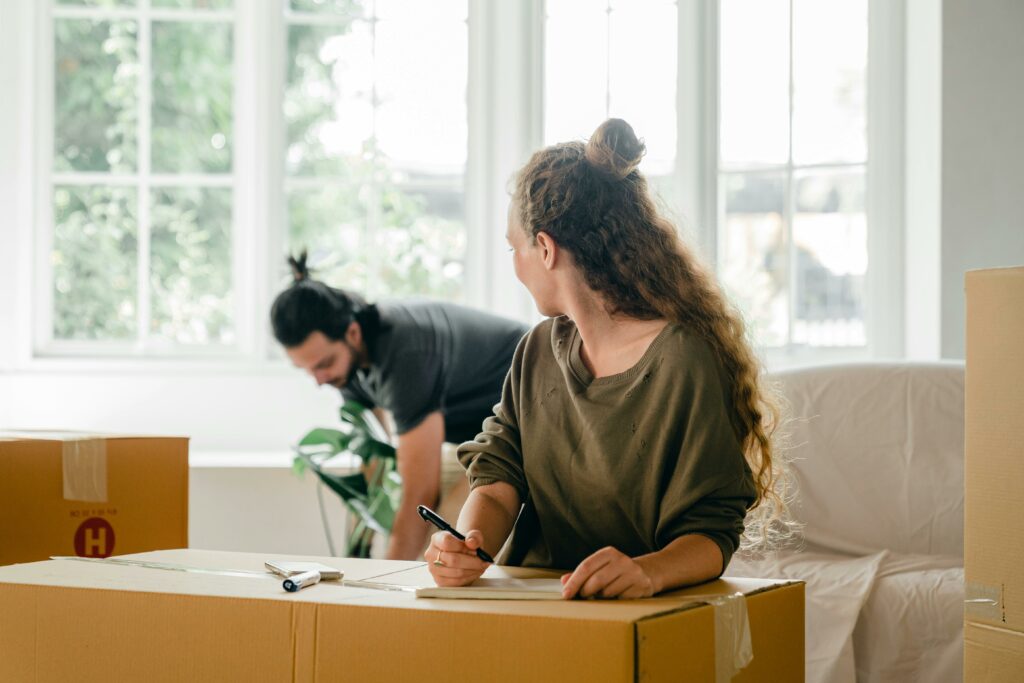Just when you thought sorting, decluttering, and arranging your personal belongings for relocation was enough of a headache, you realize that you will have to pack your beloved houseplant collection. While it's no easy task and contributes a little extra stress, it is not entirely difficult to relocate your plants to a new home.

Photo by Huy Phan
It might seem like a hassle, but within a few hours, you could be done with most of the process (also, depending on your plants). This guide will make it easy to prepare for the big move!
Gathering Supplies
What supplies do you need to move your plants to a new home? How can you keep each plant in perfect condition from prep time to arrival time?
Here are most of the major tools and materials you need to have:
| Tools | Scissors/clippers |
| Utility knife | |
| Trowel | |
| Materials | Plastic pots |
| Plastic bags | |
| Moving boxes | |
| Bubble wrap/paper wrap/newspaper | |
| Rubber bands | |
| Pepper towels/tarp | |
| Spray bottle | |
| Extras | Good potting soil |
| Plastic box for propagation | |
| Sphagnum moss |
Preparing for the Move
As a plant parent, you probably already know this, but plants take time to transition and adjust to new conditions.
It's only right that you start prepping your houseplants long before the move day. In fact, most expert horticulturists and moving companies that relocate plants advise that preparation starts almost a month before the move.
Three - Four weeks before move day:
- Start by re-potting any indoor plants in heavy planters into lightweight plastic pots for an easier carry. Make sure you don't change the size of the pot unless it is outgrowing the current one.
- Add sterilized, good soil to the mix when you repot.
- Pack all ceramic pots together, just as you would other fragile items.
- Continue watering as you normally would.
Hint: plastic planters can be placed inside heavy planters until time to pack the planters for the move.
A week before move day:
- Check for dead leaves or branches and any plant discoloration.
- Prune the dead leaves and branches with scissors or clippers to ensure a healthy plant is ready for transit.
- Continue to water regularly, if needed, and provide normal sunlight.
Hint: Any clippings that have nodes can be put into a propagation box for easy transport.
Three days to move day
- Water each plant for the last time (depending on the plant)
- Avoid over-watering the plants so they don't soak the pot or soil
- Do not water a day before the move to prevent soggy soil.

Photo by Ketut Subiyanto
Packing the Plant
Learning how to pack plants for a move is easy. Hiring a professional is not necessary.
While packing plants for moving on its own isn't difficult, the steps differ for each type of plant. Let's look at the types based on sizes and location (indoor and outdoor).
Moving plants of this size is much easier and, if done correctly, does not take much time.
The approach for plant pots of this size would have to be different—you can't just re-pot and place them in a box.
Approach #1:
The average outdoor ceramic planter can weigh over 100 lbs, even without the plants and soil. In this instance, you can get a dolly or hand truck to assist you in rolling the planter to your car as it is.
Approach #2:
You could consider chopping a few branches off and regrowing them in your new home. However, this might still require moving the large planter—if it holds any sentimental value to you.
Approach #3:
How about just letting it go? It's tough. If you are planning on relocating to a distant place, perhaps you could consider gifting it to a close neighbor or family member.
Outdoor trees and bushes
You know that small tree or bush you keep staring at in your yard because it's just beautiful? Well, you can actually take it along with you.
Of course, it will require you to get your hands dirty—literally—but it will be worth it! But first, you have to ensure it's the right time of the year to do transplanting of this nature for that specific plant and the plant will thrive in your new yard.
- You already want to have a place set in your new home to re-plant, and the climate there should allow it to thrive.
- Water the plant and the soil around it properly—ensure it gets to the roots—a few days before you begin digging it out.
- Prune out discolored, damaged, or dead leaves and branches before digging.
- Dig in a circular path around the tree or bush (far enough from the main stem) using a hand trowel or shovel.
- Dig about 10 inches into the soil and ensure you keep most of the roots intact.
- Place the dug-up tree or bush in a plastic pot or wrap it with a paper towel or tarp to prevent the root ball from drying out.
Note:
Only do this a day before moving to reduce stress on the tree or bush.
Moving Day Tips
The deal day is here, and it's time to put all your how to move with plants practice to the test.
A few tips could help you know how to move plants in a way that's best for them and easier for you. Let's see some tips to help you as you move, especially for long distances.
- Ensure each plant is well-hydrated and the soil isn't dry (unless it's a cactus or something similar)
- Never put plants at the back of a moving truck. Always try to keep it in the cab seat or in your vehicle with you.
- Suppose you're moving larger plants in the back of the truck. Lay the pot on its side and ensure the plastic bag is firmly covering it to prevent soil spills.
- Add sphagnum moss to certain plant pots and wrap them with plastic to retain the soil's nutrients.
- Wrap unsealed box plants with old sheets or towels to prevent them from being crushed or compressed.
- Remember to label sealed boxes with "Fragile," "Live Plants," and "This Side Up" so movers know how to handle them.
- Always be observant of the plants, in case they need more or less sunlight and water, should it be a long-distance move.
- Protect the plants based on the climate conditions at the time of relocation.
Note:
Ensure you have confirmed that the area you're relocating to doesn't have strict laws and requirements regarding plant relocation and the choice of indoor plants, like California, Arizona, or Oregon.
After the Move: Settling In
At this point, you're almost done! Here is what to do to help your plants get acclimated to your new home:
- Immediately take all plants from the vehicle and give them water if overly dry.
- Make sure they are not in direct sunlight.
- Place all plants in a part of your new home where fresh air and filtered sunlight is available.
- Garden and yard plants that were dug up should be re-planted as soon as possible.
- Monitor, water, and care for all plants for the next couple of weeks to ensure everything is perfect.
Good luck moving your beloved plants to your new home!
